Kei Tua o te Pae
Kei Tua o te Pae/Assessment for Learning: Early Childhood Exemplars is a best-practice guide that will help teachers continue to improve the quality of their teaching.
The exemplars are a series of books that will help teachers to understand and strengthen children's learning. It also shows how children, parents and whānau can contribute to this assessment and ongoing learning.
We are making improvements to our download-to-print functionality. So if you want a printed copy there are PDF versions available at the bottom of the main cover page.
Exemplars – Ngā tauaromahi
-
Elaine's stories
-
27 March
Written by Louise
Elaine shuffled on her bottom from the block area into the main playroom and stopped just inside the open double doors. She sat still for a moment, then became engrossed in her own special hand movement.
I sat down in front of Elaine, mirrored Elaine’s hand pattern with my hand and touched the palm of my hand to hers, then retracted it. Elaine transferred her gaze to my hand. Maintaining the V on my upheld hand, I began moving away from Elaine (shuffling backwards while sitting on the floor). Elaine followed after me, maintaining her focus on my hand. Elaine touched her hand to mine. I moved away again, and Elaine followed, her eyes never losing contact with my hand.
While I moved back a third time, one of the children came up and announced morning teatime. Elaine and I were still mirroring our hand movements when I said to Elaine, “Haere ki te kai, Elaine.”
Elaine looked at me, clapped her hands together three times, and patted her chest twice. “You’re ready for some kai? Come on, we’ll wash our hands.”
Parent’s voice
At home time, when Phyllis came to collect Elaine, I relayed the learning story to her. Phyllis said, “I say that to her at home (‘Haere ki te kai’), and she claps her hands and pats her chest.”
Teacher’s voice
I was really excited by this experience and felt a real connection with Elaine. Elaine will often become involved in self-stimulating behaviour, and this is the first time I’ve been able to break into the activity to achieve a response.
On previous occasions we have experienced reciprocal back patting – I’ve had Elaine in my arms to console her or carry her to another area, and I’ve patted her back, and she’s patted my back in return. I was particularly surprised by her response to “Haere ki te kai” and immediately felt she was signing.
The experience has highlighted the importance of getting down to the child’s level and following the child’s lead.
Short-term review
- Elaine recognised and expressed interest in a familiar manual sign made by another person.
- Elaine was able to move towards something of interest.
- Elaine may understand some spoken language.
- Elaine may be using some manual signs to communicate.
What next?
- All working with Elaine to observe closely and look for other examples of manual signing, especially clapping and patting her chest.
- Provide opportunities for engagement with another person, using Elaine’s own hand movement as ignition.
Early intervention team member’s voice
At Elaine’s IP meeting, the team discussed Elaine’s communication skills. Elaine’s caregiver shared that Elaine would often clap her hands when she was happy. The team agreed that they would focus on encouraging joint attention and establishing a reliable yes/no response.
I pointed out that this learning story illustrates an extension of a reliable yes/no response. There is joint attention but also, more significantly, there appears to be communicative intent. Elaine is telling us more than “yes”; she is also signalling that she wants morning tea.
9 October
Written by Louise

Elaine shuffles on her bottom down to the bottom of the ramp where she stops and begins watching the children riding round the concrete on bikes and scooters. A teacher approaches and Elaine starts to vocalise in a grizzly way. The teacher asks, “Do you want a ride on the trike, Elaine?” Jakob is riding past on the tandem trike – he has no passenger. The teacher speaks to Jakob. “Jakob, Elaine would like to have a ride on the new bike. Would you be the driver and let Elaine be your passenger?” Jakob pulls the bike up beside Elaine. The teacher helps Elaine into the passenger seat and off they go. The teacher stays in close proximity. Elaine is observed clapping her hands and patting her chest.
Short-term review
- Elaine can move to different areas of the centre environment independently.
- Elaine expresses interest in what is happening in the environment.
- Elaine is willing to try new things.
- Elaine is using body language and personal signs.
-
-
James and the puppets
-
29 May Teacher: Fionna
Mikayla is playing with the puppets when James comes into the family corner. Mikayla asks Maxine if James would like a puppet. Maxine tells Mikayla to ask James if he wants a puppet – which Mikayla does, and she holds the puppet out for James to put his hand in – which he tries but misses the hole. He gets the puppet on his hand with some help. Mikayla, Maxine, and James together play with their puppets, pretending to talk to each other and pretending to eat food. James gets a fork and pretends to feed Maxine’s puppet for a while.
Short-term review
- What lovely play occurred between Mikayla and James with the puppets!
- Great dramatic play, taking on another role, pretending to be a hen and pretending to feed it and give it something to drink.
- They were involved in this play for a sustained period of time.
- A variety of verbal and non-verbal gestures occurred between them during this play.


-
-
John's connecting stories
Date: 23 July
Teacher: Julie
A learning story
John watches two children and an adult play with hooks, chains, and lines.
When they move to work nearby, he begins joining the objects together.
He places them in a line. Some droop over the end of the table, so he brings a chair to attach the length to.
A hook comes free on the table; he looks, then reattaches it the other way around.
He has difficulty attaching the length to the chair and pushes it into a hole. He continues linking and hooks the length to another chair.
He goes to the other end of the table and looks at the doorknob, where a scarf is hanging. He removes the scarf and gives it to an adult without speaking.
He links his objects from the table to the doorknob, then adds chains and lets the length hang down.
He steps back and smiles.
Short-term review
John is interested in “linking objects”. He watched a group before attempting his work.
John continued to link his objects for a prolonged period.
A few of John’s hooks became detached. However, he was able to solve this by turning the hooks the other way. He solved the problem of how to hook the length over the table to a plastic chair, and he used the doorknob to attach his links at the other end.
John pointed to his construction with a big smile.
What next?
Look for opportunities for John to work out ideas about connecting – e.g., boxes, blocks, tyres, string, paper-tape, carpentry.
Encourage John to talk about his interest in this play.
Date: 19 September
Teacher: Toni
A learning story
On the deck by the carpentry table. It’s raining.
John picks up a paper tube and looks through it. “Rain,” he says, “rain.”
He looks at me as I talk into a tube. He puts the tube to his ear. I talk into it. “Yes, it’s raining.” John laughs, pulls the tube away, and puts it to his ear again. I whisper, “How are you?” He laughs.
John runs to the shelf and puts another tube on the end and puts it to my mouth. I say, “Pl- p-plop! Rain.” He laughs and gets more tubes off the shelf, adds three more tubes, and passes me the end. I put it to his mouth. He says, “No. You noise.” I say, “Patter, patter, rain.” He holds it to his ear and laughs.
He adds two more tubes and puts one end to my mouth and the tubes start falling off. John puts it on the ground and fixes the tubes that fell off and attaches more tubes. He goes back to the shelf and sorts through the tubes. He adds more tubes – 17 in total. Sam and Blake join in and add more tubes on.
Short-term review
John spent time looking at the rain before talking. Once he heard me talk, he indicated he wanted me to talk into his tube by putting it to his ear. He enjoyed hearing me talk in different tones of voice and using words to explain the noise of rain hitting the ground beside us.
John knew how to connect the pipes by choosing different sizes so they would connect together.
What next?
Continue joint attention with John.
Include other children in his play.
John is focused on connecting things together. Support his fascination with connection in the areas of play – e.g., blocks, pipes in the sandpit, tracks for the cars, boxes, and carpentry.
Date: 9 October Teacher: Toni
A learning story
John is in the sandpit. He picks up a plastic pipe and connects it to another. He looks around. I ask him to help get more out. As he walks towards me by the storage box, he says “Okay” and carries two pipes and connects them to the other two. He gets three more and connects them to the others.
He looks at me and says, “Water.” We check out the water tanks. He takes a hose and puts it in the end of his pipe. He looks in the pipe, takes the hose out, and pulls off some of the shorter pipes.
He adds three to a longer pipe, sorting pipes that are similar in diameter. He puts two small pipes in, says “No, no”, takes them off, and adds two larger ones.
Joshua joins him. John looks at him and continues to add pipes, adding to Joshua’s pipe. He puts the hose in the longer pipe. “Oh, water,” he says and shovels sand over where the water is leaking, covering four leaks with Joshua talking to him.
Short-term review
John had an idea of linking the two pipes, looked for more, and was happy to help carry more to the sandpit. He decided to add to the longer pipe and knew how to sort the sizes, so they linked together with little gap around the seal. He enjoyed connecting the pipes and seeing the water in the pipes. He decided covering the joins might stop them leaking.
What next?
Continue supporting his fascination with connection.
He includes other children in his play – continue to encourage this.
Encourage John to “talk” with children he works with by telling them what he seems to be directing at me – e.g., he looks at me if he is unsure.
Date: 9 October Teacher: Toni
A learning story
At the bike track, John rides his bike around once, stops, and pulls at a trailer on another bike. I encourage him to tell me what he wants. He points and says, “Trailer on bike.”
He unhooks the trailer as I tip the bike. He hooks it onto his bike and rides around, watching Isaac following him. John stops, adds another trailer onto his trailer, and goes around the track. He stops by Isaac and watches him. He puts another trailer onto his trailer (three now). He squeals and follows Isaac. He goes around again, stops, hooks on another trailer and looks at Isaac, who’s hooking on more trailers, too.
John smiles. “More,” he says. “Go now?” he says and smiles at Isaac. Isaac follows him and talks with him. John points to both their bikes. Each has four trailers connected together.
Short-term review
John asked for help because the trailer was hard to get off. He knew how to hook the trailer onto his bike and enjoyed moving his legs fast to push his bike around. He kept looking back at Isaac, enjoying having him there.
Having other trailers out and free supported John’s connecting, as did Isaac following his lead. He spoke directly to Isaac and enjoyed being with him.
What next?
Continue supporting John in including others in his ideas and also in joining others himself when he indicates that he wishes to.
Give him the words he needs, if needed.
Continue supporting the fascination with “connecting” – make an obstacle course, with him leading how he wants it to connect.
Junk construction – heavy boxes, tubes, etc. to join together.
Date: 18 October Teacher: Stephanie
A learning story
John was in the sandpit, connecting pipes. He made the pipes connect almost a quarter of the way down the playground. At the end of some of the pipes, water was leaking out instead of going down the next pipe. John got sand and packed it around the leaky spots to stop water from coming out onto the grass.
Short-term review
John found an interest in connecting the pipes to make the water flow. He keeps his interest for a sustained period of time and was playful with the materials. When he chose the task, he came up with a solution to solve the water leaking out the sides.
What next?
Challenge John to set and solve his own problems.
Encourage trusting others and group interactions.
Date: 3 March
Teacher: Toni
A learning story
John stopped in front of Joshua, who was holding a stop/go sign he had made. When the sign changed to red, John looked behind him, not moving. Oliver, Blake, Sam, and another child behind shouted “Go now!”
John moved on and went round again, this time stopping on green. Oliver said, “You go on green, John.” John smiled and moved on.
He looked at another child making a stop/go sign. He ran down and took some green cellophane out of the box and found long pieces of bark. He said “Stick”, cut off some tape, and stuck it to the bark. He tried three times and it wouldn’t stick, so he went inside and got some sticky tape and paper, with no prompting at all, and stuck the cellophane to the paper, and then sticky taped it to a tyre on the bike track. He smiled and said “Go now” and rode off on his bike.
Short-term review
John listened to the other children and joined in the game. He decided to make a sign, and in trying, solved his own problem. He decided to put his sign on a tyre by where Joshua had stood. He joined in the game again.
What next?
John is enjoying taking the initiative, knowing how to solve his own problem. Encourage him to verbalise what he is doing, too.
-
A father's story
Joshua came home with a wooden paddle. He asked me, “Where wheels?”
On Saturday, Joshua again asked me, “Where wheels?”, so I asked Joshua to put the paddle “on my workbench”. We don’t have a real workbench, but Joshua clamped the paddle in the vice, all on his own.
Joshua then helped me to lay in the extension cable. He also helped me to remove the electric drill from its box.
Joshua held my hand when I turned the screws holding the wheels on.
When the first wheel was mounted, Joshua let out a loud squeal (I nearly had a heart attack) and said, “We did it, Dad.”
This happened three more times as each wheel in turn was mounted.
Joshua disappeared into the house at a rate of knots to show Mum.
Joshua had to be called back to help me clean up.
Joshua’s father later commented that Joshua had remembered to ask to make the truck a second time, that he took the initiative by putting the paddle in the vice, and that he had again been hugely excited as the truck emerged. He also noted that Joshua remembered that he was expected to help clean up after himself.
-
Eating at kindergarten
-

As part of the kindergarten environment, we have been planting and growing some vegetables. The children have helped with preparing the soil, planting, watering, and weeding. They are now reaping the benefits and help themselves to tomatoes when they want them.
We were talking about other vegetables that we grow at home and were very lucky to have Maxine bring us in some corn and a corn plant. There was a lot of discussion about how it grew, what it had needed to grow, and where the corn grew on the plant. We were then able to have a piece for ourselves.
YUMMY!!!!
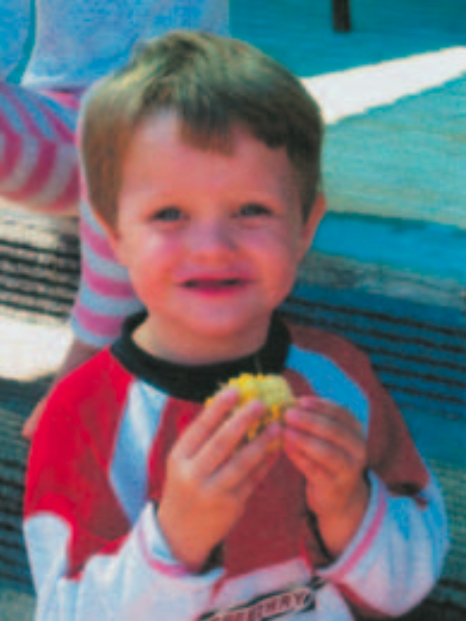
April

13 June
Nathan comes inside and says, “Morning tea.” “Yes,” says Maxine. “Wash your hands.” Nathan washes his hands and then goes to get his bag. He comes back. “My bag lost.” “Have another look,” says Maxine. Nathan finds his bag and sits down to eat. He starts to eat his sandwiches, looks at Maxine, holds up four fingers, and says “I eat four.” He stays and eats all his sandwiches.
Short-term review
- First time Nathan has initiated eating on his own.
- He ate all his sandwiches. Over the last two terms, he has struggled to eat one. With adult help, he has built up to four.
- He ate them in 10 minutes, previously taking 30 minutes or more.
- He joined three other children at the table. Nathan’s comfort zone is increasing around other children.

June
Teacher: Kim
Nathan is having morning tea with a large group of children. This is a huge milestone as he never used to do this and is now comfortable joining in. He now even eats when we do baking, whereas before, he took it but never ate it.
-
-
Sherina sings hello
Child: Sherina
Date: 6 October
Teacher: JanetThe child’s voice
A Learning Story
Belonging
Mana whenuaTaking an Interest First day of term 4, Mum brought Sherina into kindergarten and took her to see Sue. “Hello, Susie,” sang Mum.
“Susie, Susie,” sang Sherina.
“Hello, Sherina,” I sang to Sherina.
“Hello Janet,” sang Sherina, using the same melody.
Mum told me that Sherina finds it easier to sing people's names instead of saying them.
Well-being
Mana atuaBeing Involved Exploration
Mana aotūroaPersisting with Difficulty Communication
Mana reoExpressing an Idea or a Feeling Contribution
Mana tangataTaking Responsibility Review
I have been using chants and singing when interacting with Sherina but hadn't thought of using them in greetings.
Follow-up
Since then, I've used singing when giving instructions and information and Sherina sings them back to me.
-
Reading the portfolio
-
11 June Writer: Pam
Cameron sat on the floor for 15 minutes till tidy- up time, looking at his folder. He turned the pages right to left and most of them one at a time, although not always. When a photo was on a different angle, he turned the page to look at it. He leaned over photographs he specially wanted to look at, saying “Ooh, ooh” at photos of him with babies. He verbalised while he looked – sometimes babbling as he pointed to photos – but he also pointed at the written words and moved his finger from left to right across the page. When he finished the book, he turned it over and started again – over and over again till he was satisfied and tidy-up time started.
What’s occurring here?
Cameron loves looking at the story told in pictures of himself. He has the ability to stay concentrating for a long while. He can turn pages correctly and seems to have some idea that the words accompany spoken language and that when you speak the words, you point to the page.



-
-
"I can't tell you how amazing it is!"
Child: Kian
Date: 5/6
Writer: SueA Learning Story
Taking an Interest
Kian is on a resonance board surrounded by rattly things and a blue cheerleader's pompom. The gold mobile is hanging above him within reach. Kian is enjoying touching the pompom and the strands of the gold mobile. He has his boots on but is not making any movement with his legs to make noise contact with the board.
I start to stimulate some movement by creeping my fingers down his leg from the hip and finish with lifting his foot a little, then dropping it onto the board so his boot makes a noise. As I do this, I'm chanting “Kian lifts his foot and goes crash.” I time the word “crash” with the boot landing on the board. I wait for him to copy. After three repeats, with waiting time in between, Kian lifts his leg himself and crashes his boot onto the board. He smiles at me. I leave Kian to a few minutes of exploring on the board. He lifts and kicks his boot one more time and smiles.
Being Involved Persisting with Difficulty Expressing an Idea or a Feeling Taking Responsibility Parent’s voice
Today a staff member recorded this learning story about your child. It captures a part of your child's day. We invite you to make a comment about this story. We will include this story and your comments in your child's folder, which will be given to you to keep when your child leaves our centre. We would love to hear about your child's experiences at home too.
"It is amazing how the smallest thing can be amazing. I was so excited with Kian's story that I went out and bought a bottle of wine to celebrate.
I can't tell you how amazing it is to have someone else tell you what your child “can” do instead of all the “cant's”.
The processes that the centre uses to encourage Kian to communicate are very good, and since learning those things, I am looking at Kian in a different light and attempting to talk with him rather than at him.
Thank you so much, Sue, for taking the time to write down Kian's experience."
-
Fred's stories part 1
-
A learning story
7 June




Today, Fred and I shared his story scrapbook together.
Fred signed “ball” when we were reading the page about him kicking the ball.
As I was reading, Fred was finishing the sentences.
There was lots of talk about what was happening in the pictures.
Ruby was standing close by, watching while I was reading. When I finished Fred's book, Ruby picked it up and started reading with him. In the picture opposite, you can see Ruby role-modelling the sign for “fish” and Fred copying her.
Fred listened to Ruby and talked about the pictures with her, too. Fred and Ruby spent quite some time sharing Fred's book and only stopped when it was tidy-up time.
The learning story is recorded onto Fred's videotape so he can revisit it with his friends and family any time.
Short-term review
What a delightful story! Fred and I enjoyed time together sharing his book and talking about the pictures. I was so impressed by Fred's strong interest in his book and the signs he spontaneously did. Fred is showing a strong interest in his name. When he got to the page of him writing his name, he used his finger to write an “F” for Fred on top of his picture. (Te Whāriki, Communication, Goals 3.1 and 3.4)
What priceless video footage of Fred with his friend Ruby, sharing time together.
From the video and pictures, it is easy to see Fred's enjoyment as he shared his book with Ruby. Once again, Fred revisited his story and talked about the pictures with Ruby.
What next?
Lots more stories with Fred, sharing and talking about the pictures. Make Fred more books using pictures of his time at kindergarten. He was very responsive to the photos of his family, so perhaps a book including his kindergarten friends. Encourage Fred to use his name card as a writing tool and also introduce him to magnetic letters as an early literary resource. We have some stories in Tongan that Fred may like to take home to share with his family.
Child’s name: Fred
Date: 10 June
Teacher: Karen
A Learning Story
Belonging
Mana whenuaTaking an Interest 



Today, Fred was working with Lyn; he was working from his choosing box. Fred was involved with a writing activity and made patterns.
“McDonalds,” he said.
“Wow, Fred, you are so clever. You've been writing M's!” I replied.
Later on, Fred's friends joined him and he continued to write. He watched Fuka and copied the symbols she had written on her paper.
Fuka wrote her name, and Lyn suggested that Fred could write his name, which Fred did.
He continued to enjoy this activity for quite some time, and it seems he particularly enjoyed his friends' company, too.
Well-being
Mana atuaBeing Involved Exploration
Mana aotūroaPersisting with Difficulty Communication
Mana reoExpressing an Idea or a Feeling Contribution
Mana tangataTaking Responsibility Short-term review
From the video and photos, it is clear that Fred is showing an interest in writing.
It is great to see him enjoying the friendships and using his friends as role models. Fred has excellent observational skills and often watches his friends for cues.
(See Fred's videotape for all the footage to this learning story.)

Question: What learning did I think went on here (I.e the main point(s) of the learning story)?
What next?
Provide lots of opportunities for Fred to use print in activities that are purposeful and meaningful.
Write down Fred's stories about his artwork as a way of modelling print. Talk about the letters and words.
Share stories.
Use Fred's name card as a tool when activities are involved around print – e.g., magnetic letters.
Questions: How might we encourage this interest, ability, strategy, disposition, story to”
- be more complex?
- appear in different areas or activities in the programme?
How might we encourage the next “step” in the learning story framework?
Date: 26 June
Teacher: Karen
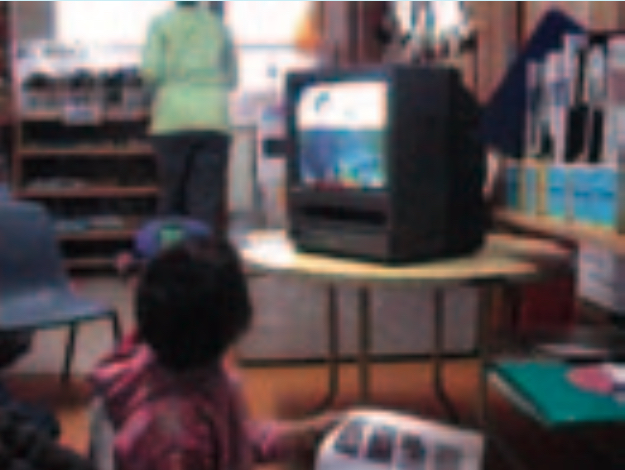
Recently, we have begun to record some of the children's learning stories onto videotape. Today, I showed Fred his videotape for the first time.

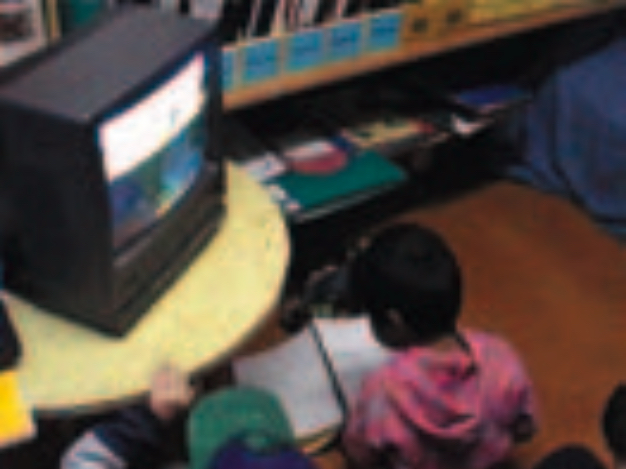
The first story on his tape is about him and Ruby. When Fred saw the pictures, he went and got his file. Then he took his position back in front of the TV, and while he watched his story, he also looked through his file.
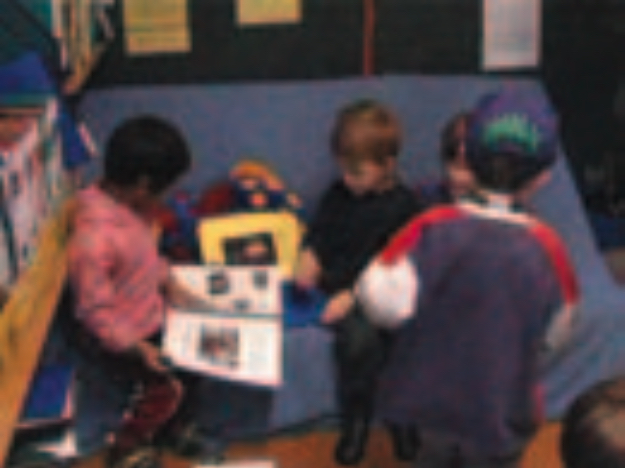
Fred then went on to sharing his file with his friends

Fred also enjoyed watching his friends’ tapes, but he made sure his videotape was close by. In this picture, you can see Fred had got his tape securely between his feet.

Fred joins in with the children's enjoyment as they revisit the learning story of his friends singing the pizza song.

Fred continues to keep a close hold of his tape.
Short-term review
Recording children's learning stories on videotape is a new development in our assessment process.
Today was the first time Fred saw his tape with his stories on it. Once he began watching his learning experience, he automatically made the connection it has with his file. He found his file and read it while he watched the video footage. As he read along with the tape, he was matching the pictures that were in his file. (Te Whāriki, Communication, Goals 3.2).
Fred has a strong connection with his file (recently he was dancing with it clutched under his arm), and he has automatically transferred this sense of ownership to his videotape as sell.
Having some of Fred's stories on tape gives Fred and his family the opportunity to revisit learning experiences and share the learning moment again, and again, and again!
What next?
Use Fred's tape as a tool to revisit learning experiences to develop vocabulary, and encourage Fred to talk about what he is doing to help the development of his expressive language.
Fred can celebrate his stories with his friends. Once again, this is a great opportunity for Fred to use expressive language.
-
-
Fred's stories part 2
-
Child's name: Fred
Date: 27 June
Teacher: Karen
Examples or cues A Learning Story
Belonging
Mana whenuaTaking an Interest Finding an interest here – a topic, an activity, a role. Recognising the familiar, enjoying the unfamiliar. Coping with change. Fred came with his mum to his IP meetings today. We put Fred's videotape on to celebrate Fred's progress with his IP team.
Fred's second story on the tape was about some writing he had done in a book. When the story came on the screen, Fred went to the storeroom and returned with the actual book he had been writing in a few days before.
Fred went back to the video and began writing in his book again, writing the same pattern he was doing on the video.

Well-being
Mana atuaBeing Involved Paying attention for a sustained period, feeling safe, trusting others. Being playful with others and/or materials. Exploration
Mana aotūroaPersisting with Difficulty Setting and choosing difficult tasks. Using a range of strategies to solve problems when ‘stuck’ (be specific). Communication
Mana reoExpressing an Idea or a Feeling In a range of ways (specify). For example: oral language, gesture, music, art, writing, using numbers and patterns, telling stories. Contribution
Mana tangataTaking Responsibility Responding to others, to stories, and imagined events, ensuring that things are fair, self-evaluating, helping others, contributing to programme. Short-term review
Once again, Fred's reaction to his video footage amazed me: I didn't realise how powerful it was going to be for the children to have the opportunity to revisit their learning experiences.
Having his video footage also gave Fred a sense of empowerment and the opportunity to celebrate his success with adults (the IP Team) that aren't involved in his daily learning experiences.
Question: What learning did I think went on here (i.e. the main point(s) of the learning story)?
What next?
Continue with last “What next?!”
Questions: How might we encourage this interest, ability, strategy, disposition, story to:
- be more complex?
- appear in different areas or activities in the programme?
How might we encourage the next “step” in the learning story framework?
Child's name: Fred
Date: 16 July
Teacher: Karen
A Learning Story
Belonging
Mana whenuaTaking an Interest 


Today, Fred had been busy creating in the block corner; he had used Mobilo to make a model.
I found Fred in the art area; he had his model alongside him and was now painting a picture.
“Fred, write a story about your model,” I encouraged.
“Fire engine,” Fred replied. Fred watched as I wrote his words down. He then picked up his pen and began to write letters on his page.
I then suggested that Fred could draw his model. Fred looked very carefully at his model. He showed me how the ladder worked. He then drew it onto his paper.
Well-being
Mana atuaBeing Involved Exploration
Mana aotūroaPersisting with Difficulty Communication
Mana reoExpressing an Idea or a Feeling Contribution
Mana tangataTaking Responsibility 

Fred's writing Fred's model Short-term review
Fred chose his activity today. He was open to ideas when I extended the activity to involve modelling print for a purpose.
Fred was able to represent his model in another medium and drew his model.
What next?
Encourage Fred to express his ideas verbally and to record his ideas. Model print.
We have some stories in Tongan that Fred may enjoy sharing with his family. The books are in the book corner; you are welcome to use it like a library.
Child's name: Fred
Date: 17 July
Teacher: Karen
A learning story
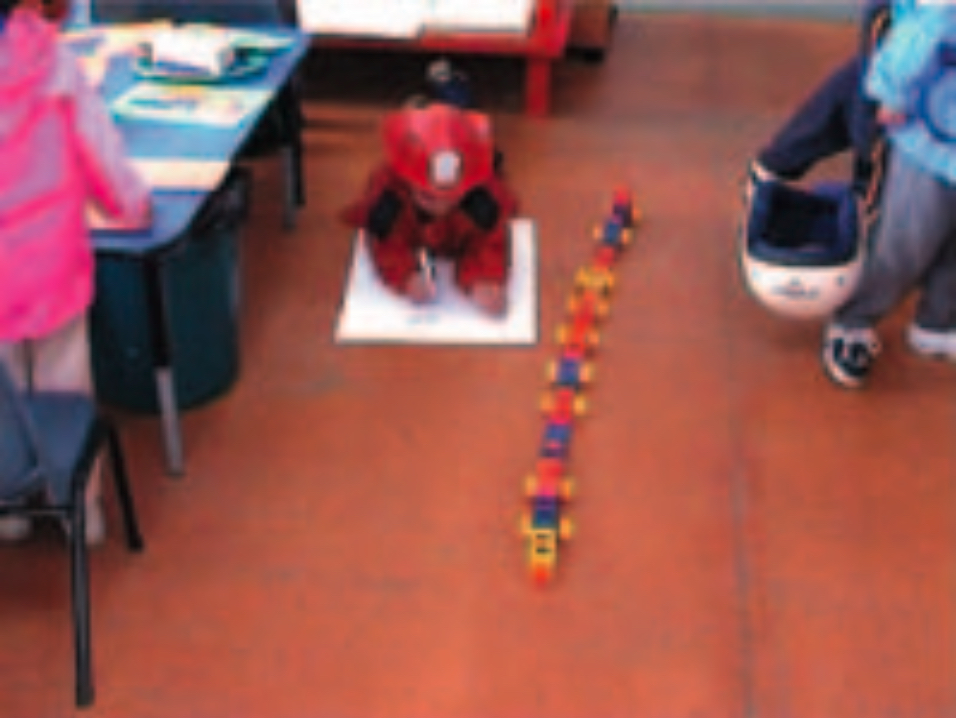



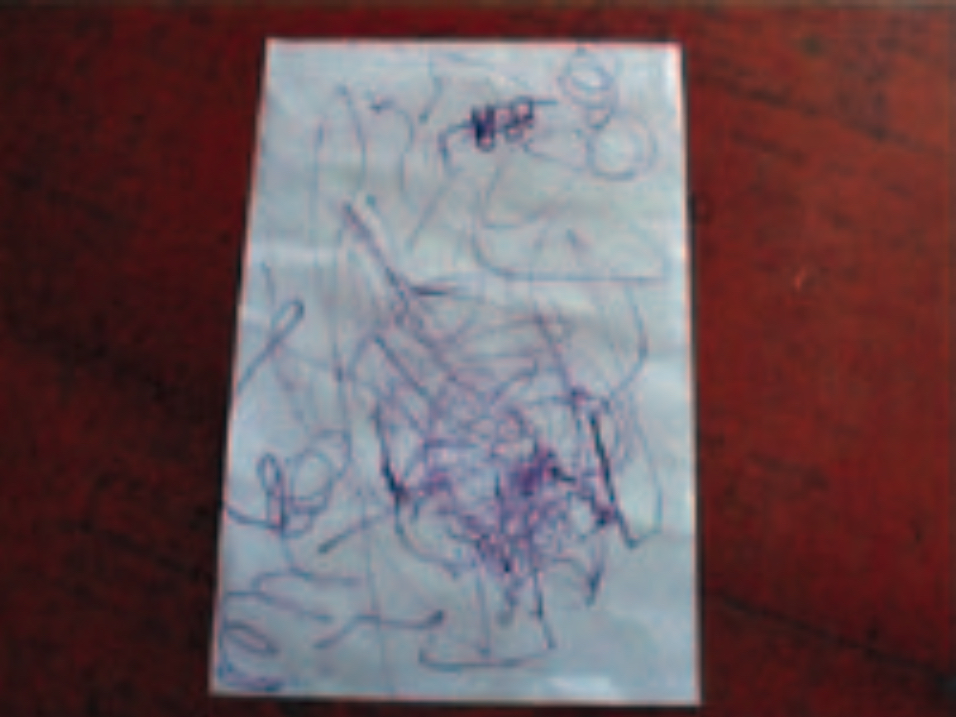
Fred returned to the block corner today and made another model with the Mobilo. He brought his model to the art area and looked around.
“Do you want paper, Fred?” I asked.
“Paper,” Fred replied.
“On the shelf,” I said, pointing to the paper.
Fred chose a piece of paper and a felt pen and then set about drawing his model. Then he drew lines on his paper.
“What is that?” I asked.
Fred pointed to his car and then traced the lines he had drawn. “Brrrrrrrrrrrrrrrrrrrr,” he said.
“Oh, your car is driving,” I said. “Where is your car going?” I asked.
Fred pointed to an area on his drawing. “Shop,” he replied. So I drew an arrow and wrote the word “shop”. Fred watched while I wrote, and then drew his own arrow.
At mat time, Fred shared his drawing with all of his friends. Fred explained his drawing: “Car, shop”.
“What are you going to buy at the shop?” Glynis asked. Fred was quick to reply: “Chocolate!”
Short-term review
Fred drew on his experience yesterday and extended his own learning today. (See last learning story.) This story is one example of Fred being a self-directed learner, choosing his own task and persisting until he has finished. This story also reflects Fred's observation skills and how he copies what is modelled to him – e.g., drawing an arrow. It was great to see Fred celebrating his work at mat time and expressing his ideas.
What next?
Model talking and writing.
When working with or alongside Fred, verbalise what he is doing. This helps Fred to make a connection between his actions and the words he is hearing.
Give Fred opportunities to celebrate and share his creations at mat time and during sessions, and ask open-ended questions to encourage Fred's expressive language. Remember to give Fred time to listen to the question and then reply.
Child's name: Fred
Date: 17 September
Teacher: Karen
A learning story


Tomorrow, we are having breakfast at kindergarten. Today, the children were deciding what food we should have. To do this, they had turns voting, writing their names in the columns. Once Fred had his turn, he found his own piece of cardboard and set about drawing up his own graph.
Short-term review
Yet again, another example of Fred being involved in literacy for a purpose. Fred directed his own learning, and from his involvement in this activity, he was able to transfer this experience into drawing his own graph, even with headings.
-
